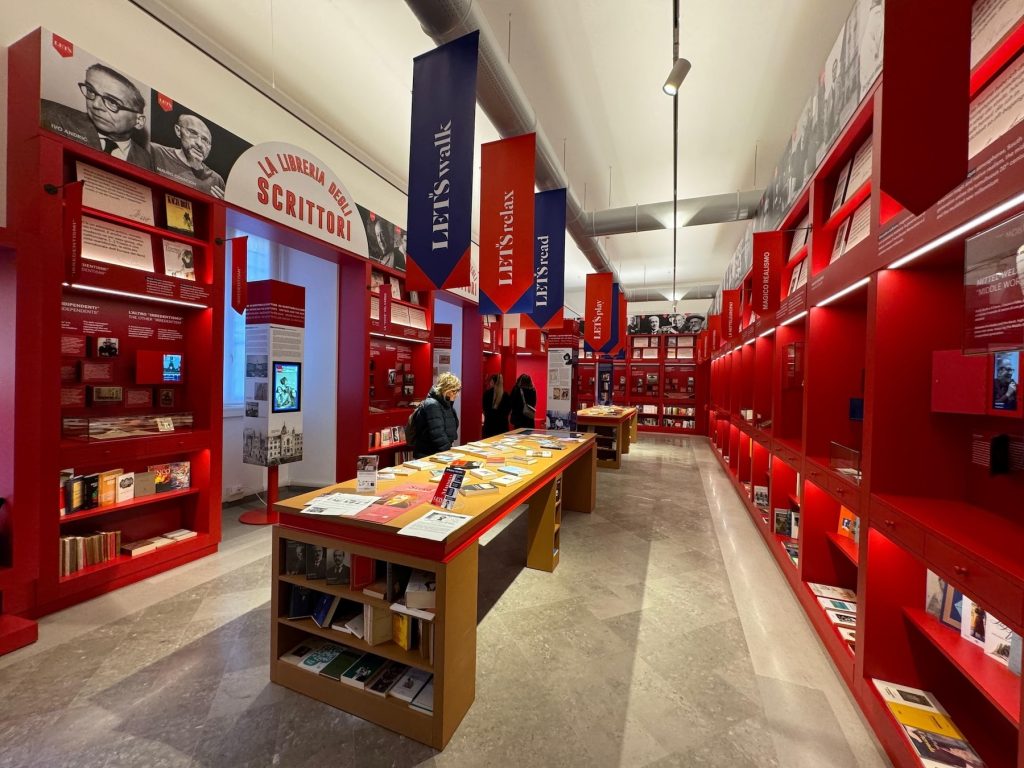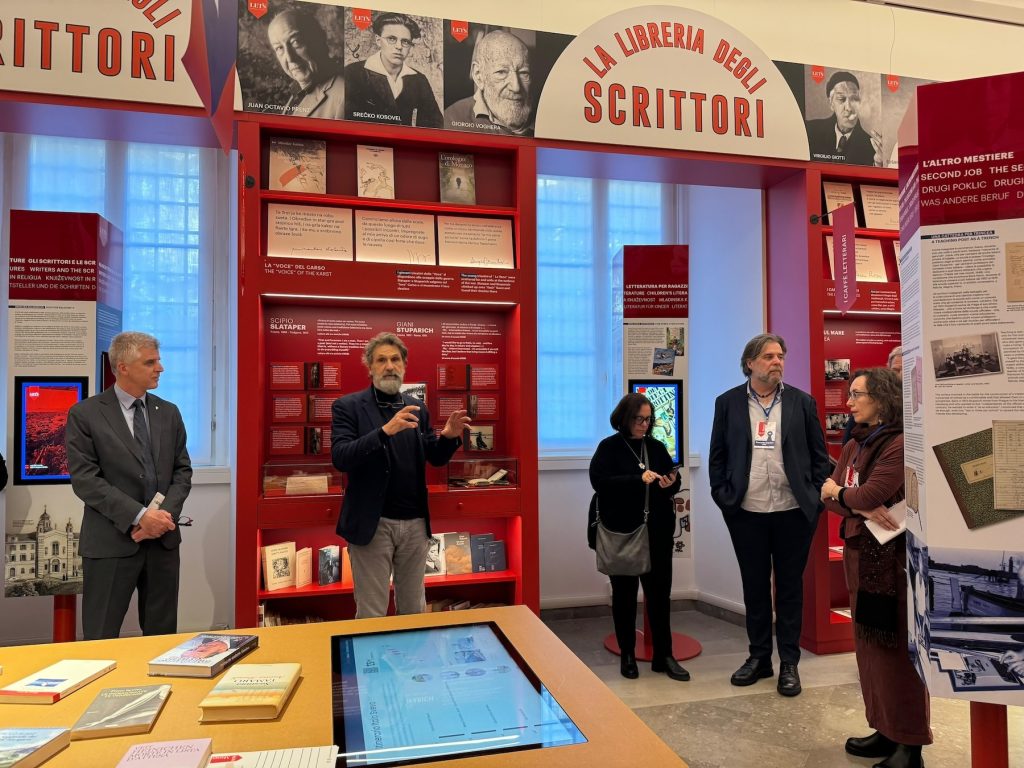by InTrieste
On Tuesday, December 19th, the ground floor of Palazzo Biserini (4 Attilio Hortis Square) hosted a sneak peek of the new LETS Museum – Literature Trieste, ahead of its official inauguration scheduled in the coming months.

The institutional preview saw the participation of authorities and the press. Among those present were Maurizio De Blasio, the Commissioner for Education and Family Policies; Manuela Salvadei, the director of the School, Education, Tourist Promotion, Cultural and Sports Promotion Service; Riccardo Cepach, Cristina Fenu, and Susan Petri (curators of the Museum) representing the Municipal Museums and Libraries Service; architect Lorenzo Greppi (responsible for the design and setup); a delegation from Fallani srl (the construction company); Francesco Granbassi, president of the Politeama Rossetti Theater; and professors from the University of Trieste, Paolo Quazzolo and Laura Pelaschiar.
Commissioner De Blasio declared, “This preliminary opening coincides with December 19th, an important date symbolically for the region and for national literature, as it marks the anniversary of the birth of Italo Svevo. The initial hope is that this hub of culture and learning, leading up to the official opening in the coming months, will become a reference point not only for Trieste but also for tourists and students coming to the city from elsewhere. A secondary hope is that the museum continues to evolve, remaining a dynamic structure that continues to enrich itself. The fundamental role of humanistic culture is as crucial to societal progress as technological development.”
Later in the day, guided tours were open to the public, and reservations were fully booked within less than 24 hours of being published on institutional web channels.
In the expansive hall in front of the “Fulvio Tomizza” Newspaper Library, visitors first encounter the “Writers’ Bookstore”: dynamic and divided into 19 thematic modules and 7 rotating stations, it offers 1,012 books to the public. It is both an exhibition and interactive space, designed to be touched and flipped through. Dozens of writers associated with Trieste are showcased on the walls and large tables in the center of the room, covering the period from the late 1800s to the present day. Alongside the volumes are drawers to open and explore, postcards with historical photographs, and multimedia stations with sounds and images. The large multimedia totems, in particular, contain crucial information on various cross-cutting themes related to individual authors, from children’s publishing to literary cafés, from consular writing to translation, and literature as an “other” profession. Architecturally, the space represents a synthesis of an antiquarian bookstore, contemporary library, and a graphic element that integrates quotes and explanatory notes. The large windows overlooking the city feature listening stations with sounds and images. In addition to the audiobooks from the “LETSlisten. Our Authors in Audiobook” project, future plans include listening to the voices of writers through collaboration with Rai Fvg.

Another room hosts a cinematic screen: the “Story Cinematograph,” narrating Trieste and literature through cinema, both through the eyes of directors who chose the city as a set and through books that transformed into films. Inside is a tribute to “Zeno’s Conscience.”
In another space, the Svevo Museum has found its place, partially replicating the layout of the previous location. There’s the wardrobe-bookshelf with Ettore Schmitz’s initials engraved, the historic violin, and, in general, the reconstruction of a bourgeois interior representing the polarity embodied by Svevo as he oscillated between his personal and artistic biography. Along the perimeter of the room, the story of his life is interspersed with displays featuring postcards, documents, original manuscripts, as well as paintings (thanks to collaboration with the Revoltella Museum), multimedia supports, and sound contributions. There is also an attached smaller room dedicated to psychoanalysis, containing the typical couch where one can experience a conversation on the relationship between Trieste and Freud through a recorded narrative voice.
In the coming months, the LETS Museum will complete its setup with four additional spaces: the renovated Joyce Museum, a new space dedicated to the poet Umberto Saba, a welcoming area called the “History Kiosk,” providing more general and preliminary knowledge for the full enjoyment of the museum, and finally, an additional multifunctional space.
The “opening preview” of the LETS Museum was part of the “Happy Birthday Svevo” festival, celebrating the anniversary of Italo Svevo’s birth on December 19th.




























